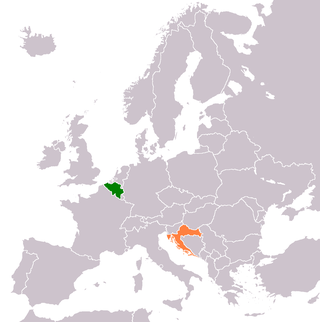
Ecuador, officially the Republic of Ecuador, is a country in northwestern South America, bordered by Colombia on the north, Peru on the east and south, and the Pacific Ocean on the west. Ecuador also includes the Galápagos Islands in the Pacific, about 1,000 kilometers (621 mi) west of the mainland. The country's capital is Quito, but its largest city is Guayaquil.

Demographic features of the population of Ecuador include population density, ethnicity, education level, health of the populace, economic status, religious affiliations and other aspects of the population.

Guayas is a coastal province in Ecuador. It is bordered to the west by Manabí, Santa Elena, and the Pacific Ocean ; to the east by Los Ríos, Bolívar, Chimborazo, Cañar, and Azuay; to the north by Los Ríos and Bolívar; and to the south by El Oro and the Pacific Ocean.
Ecuador is a multicultural and multiethnic nation, with the majority of its population is descended from a mixture of both European and Amerindian ancestry. The other 10% of Ecuador's population originate east of the Atlantic Ocean, predominantly from Spain, Italy, Lebanon, France and Germany. Around the Esmeraldas and Chota regions, the African influence would be strong among the small population of Afro-Ecuadorians that account for no more than 10%. Close to 80% of Ecuadorians are Roman Catholic, although the indigenous population blend Christian beliefs with ancient indigenous customs. The racial makeup of Ecuador is 70% mestizo, 7% Amerindian, 12% White, and 11% Black.

Barcelona Sporting Club is an Ecuadorian sports club based in Guayaquil, known best for its professional football team. Internationally known as Barcelona de Guayaquil, in Ecuador it is simply referred as Barcelona, El Idolo (BSC) or Los Canarios. They currently play in the Ecuadorian Serie A, the highest level of football in the country, and hold the distinction of being the only club in the Ecuadorian top flight to not have played in the Serie B.
The history of the Jews in Latin America began with conversos who joined the Spanish and Portuguese expeditions to the continents. The Alhambra Decree of 1492 led to the mass conversion of Spain's Jews to Catholicism and the expulsion of those who refused to do so. However, the vast majority of conversos never made it to the New World and remained in Spain slowly assimilating to the dominant Catholic culture. This was due to the requirement by Spain's Blood Statutes to provide written documentation of Old Christian lineage to travel to the New World. However, the first Jews came with the first expedition of Christopher Columbus, including Rodrigo de Triana and Luis De Torres.

Immigration to Argentina began in several millennia BCE with the arrival of different populations from Asia to the Americas through Beringia, according to the most accepted theories, and were slowly populating the Americas. Upon arrival of the Spaniards, the native inhabitants of Argentine territory were approximately 300,000 people belonging to many Indigenous American civilizations, cultures, and tribes.

Ecuadorian Americans are Americans of full or partial Ecuadorian ancestry. Ecuadorian Americans are the 9th largest Latin American group in the United States. Ecuadorian Americans are usually of Mestizo, Amerindian or Afro-Ecuadorian background.

Eduardo Maruri Miranda is an Ecuadorian businessman and creative leader who is currently President & CEO Europe, as well as Vice President of the Global Creative Board, at Grey Global Group. His latest achievements include being named Campaign Magazine’s EMEA Agency Head of the Year 2020 and being appointed Goals Jury President at the Cannes Lions Festival of Creativity ‘20/21.
Lebanese Ecuadorians are Ecuadorians who are descended from migrants from Lebanon. There are approximately 100,000 Lebanese people and their descendants living in Ecuador.

Ecuadorian cuisine is diverse, varying with altitude and associated agricultural conditions. Ecuadorian cuisine is an amalgamation of Spanish, Andean, and Amazonian cuisines and to a lesser degree Italian, Lebanese, African, and Chinese. Beef, chicken, and seafood are popular in the coastal regions, especially ceviche, and are typically served with carbohydrate-rich foods, such as rice accompanied with lentils, pasta, or plantain. In the mountainous regions pork, chicken, beef and cuy are popular and are often served with rice, maize, or potatoes. A popular street food in mountainous regions is hornado, consisting of potatoes served with roasted pig. Some examples of Ecuadorian cuisine in general include patacones, llapingachos, and seco de chivo. A wide variety of fresh fruit is available, particularly at lower altitudes, including granadilla, passionfruit, naranjilla, several types of banana, uvilla, taxo, and tree tomato.
Banking in Ecuador has a long history. At the time of the dissolution of Gran Colombia and its formation as a republic, Ecuador's economy was generally not monetized; gold and silver coins were circulated, and were brought into common use by successive currency laws. Little by little, with the growth of the nation, Ecuadorian banking also grew and was particularly centered on the city of Guayaquil. After the Liberal Revolution came a period called the Banking Plutocracy that was dominated by private banking, especially by the Commercial and Agricultural Bank of Guayaquil. This period ended with the July Revolution of 1925.

Croats of Belgium are an ethnic group in Belgium. About 10,000 Belgians stated that they have Croatian roots, according to the Croatian associations and Catholic missions. They appeared in Belgium for the first time during the Thirty Years' War, as a part of Austrian and French cavalry. Even today, the exact number of Croats in Belgium is unknown, mostly because they were considered as Yugoslavs by Belgian government. During the last years, number of Croats in Belgium is increasing because of immigrants from Bosnia and Herzegovina. The number of Croats didn't pass the number of 10,000 since the World War II when Croatia was part of a larger country Yugoslavia.

Ecuadorians are people identified with the South American country of Ecuador. This connection may be residential, legal, historical or cultural. For most Ecuadorians, several of these connections exist and are collectively the source of their being Ecuadorian.
Americans in Ecuador consists of immigrants from the United States to Ecuador which includes but is not exclusive to many retirees. It is estimated that about 5,000 to 10,000 American immigrants now live in the country.

The history of the Jews in Ecuador dates back to the 16th and 17th centuries, when Sephardic Jews began arriving from Spain and Portugal as a result of the Spanish Inquisition. Ecuadorian Jews are members of a small Jewish community in the territory of today's Ecuador, and they form one of the smallest Jewish communities in South America.

Although China's economic influence is growing rapidly throughout Latin America, it is perhaps most evident in Ecuador where it enjoys a near-monopoly of crude exports. Critics of Ecuadorian President Rafael Correa say that the Chinese influence has gone too far and threatens national sovereignty while indigenous peoples' rights and biodiversity could be severely harmed because of Ecuador's oil commitments to China.
Croatian Bolivians are one of the main European ethnic groups in the South American country, although their figures are not as large as those of its neighbours.

Italian Ecuadorians are Ecuadorian-born citizens who are fully or partially of Italian descent, whose ancestors were Italians who emigrated to Ecuador during the Italian diaspora, or Italian-born people in Ecuador.

Jan Tomislav Topić Feraud is an Ecuadorian businessman, economist, and politician who ran for President of Ecuador in the 2023 Ecuadorian general election. He was eliminated in the first round held on 20 August 2023, coming fourth with 14.66% of the vote. He has served as president of Telconet since 2010. His alleged activities for the French Foreign Legion have raised concerns of Topić being a mercenary, a label that he denied. Prior to the 2023 Ecuadorian political crisis, he was briefly nominated to serve as Minister of Security by Guillermo Lasso.













